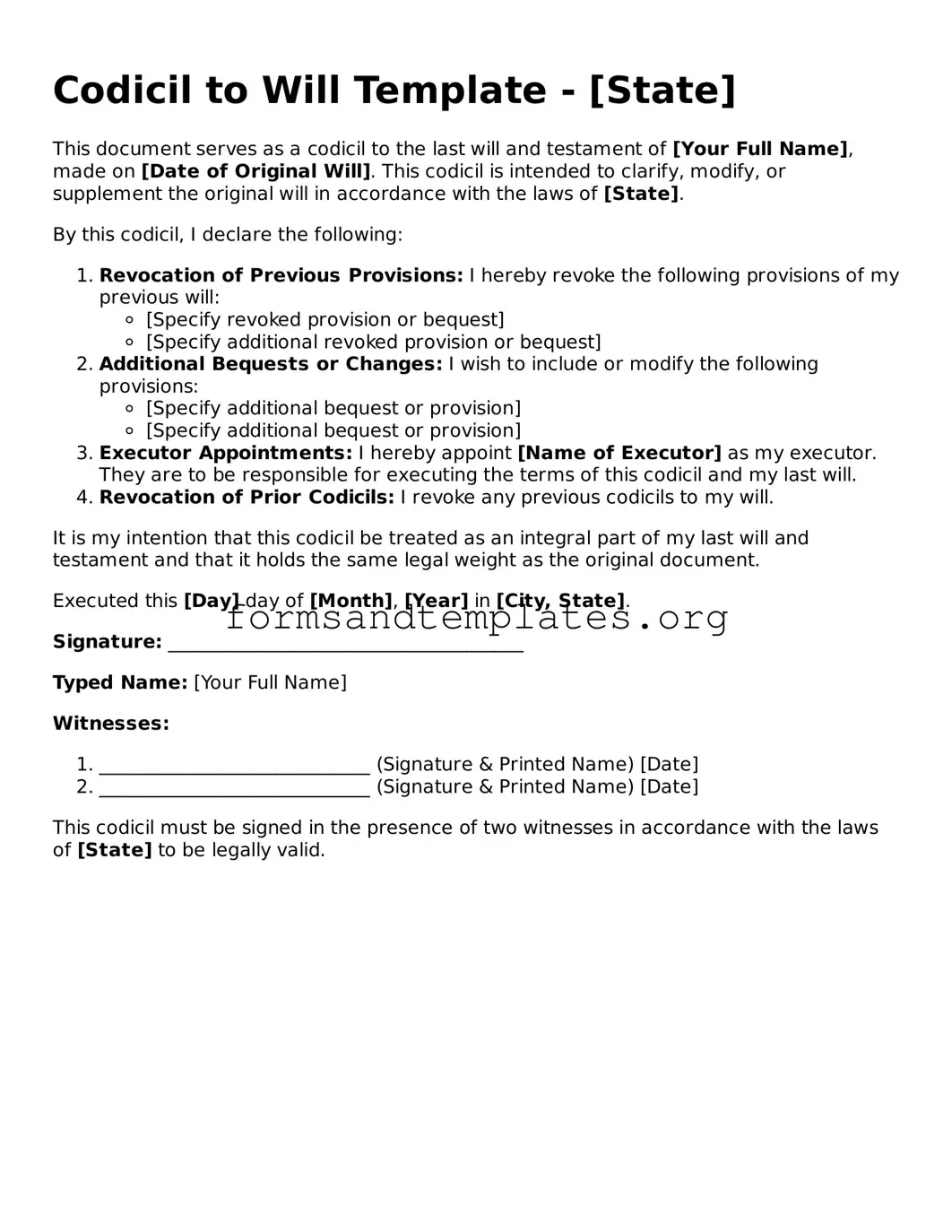Codicil to Will Template - [State]
This document serves as a codicil to the last will and testament of [Your Full Name], made on [Date of Original Will]. This codicil is intended to clarify, modify, or supplement the original will in accordance with the laws of [State].
By this codicil, I declare the following:
- Revocation of Previous Provisions: I hereby revoke the following provisions of my previous will:
- [Specify revoked provision or bequest]
- [Specify additional revoked provision or bequest]
- Additional Bequests or Changes: I wish to include or modify the following provisions:
- [Specify additional bequest or provision]
- [Specify additional bequest or provision]
- Executor Appointments: I hereby appoint [Name of Executor] as my executor. They are to be responsible for executing the terms of this codicil and my last will.
- Revocation of Prior Codicils: I revoke any previous codicils to my will.
It is my intention that this codicil be treated as an integral part of my last will and testament and that it holds the same legal weight as the original document.
Executed this [Day] day of [Month], [Year] in [City, State].
Signature: ______________________________________
Typed Name: [Your Full Name]
Witnesses:
- _____________________________ (Signature & Printed Name) [Date]
- _____________________________ (Signature & Printed Name) [Date]
This codicil must be signed in the presence of two witnesses in accordance with the laws of [State] to be legally valid.
